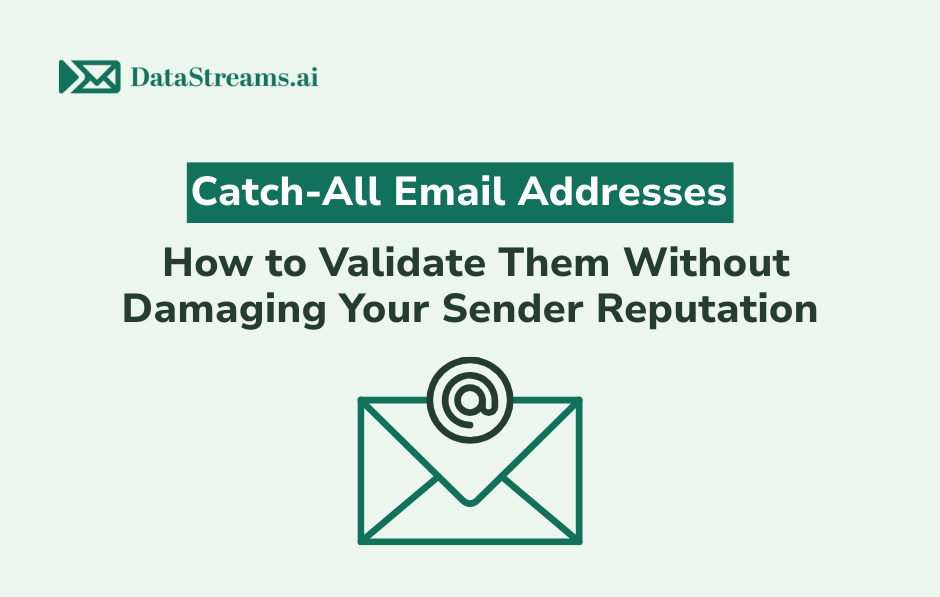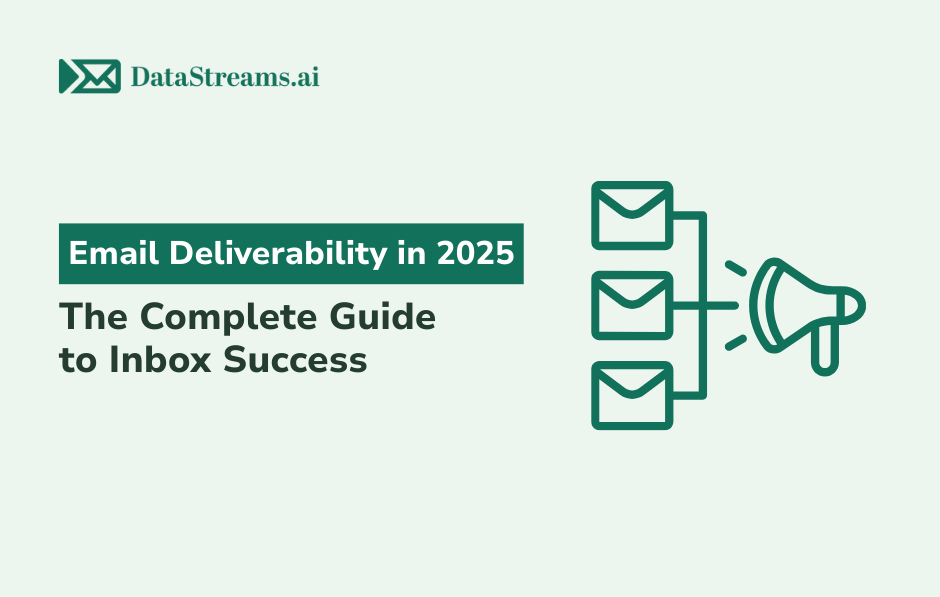Email marketing success hinges on one critical factor: reaching real people who actually want to hear from you. Yet many businesses unknowingly sabotage their campaigns by including role-based email addresses in their lists. These seemingly innocent addresses like info@company.com or support@business.org can quietly destroy your sender reputation and tank your deliverability rates.
But here’s where it gets tricky – not all role-based emails are created equal. Some deserve a spot in your campaigns, while others should be removed immediately. Understanding the difference can mean the gap between inbox success and spam folder obscurity.
What Are Role-Based Email Addresses?
Role-based email addresses are generic email accounts tied to a function or department rather than an individual person. Instead of john.smith@company.com, you’re dealing with addresses like:
- sales@company.com
- info@business.org
- support@website.net
- admin@organization.com
- noreply@brand.co
These addresses often serve as catch-alls for incoming communications, managed by multiple team members or automated systems. While they serve legitimate business purposes, they present unique challenges for email marketers.
The Hidden Dangers of Role-Based Emails
Deliverability Destruction
Internet Service Providers (ISPs) and email filters view role-based addresses with suspicion. Here’s why: these addresses typically generate higher complaint rates, lower engagement, and increased bounce rates. When Gmail, Outlook, or Yahoo sees consistent poor performance from campaigns targeting these addresses, they start routing your emails directly to spam folders.
Engagement Erosion
Think about it – when was the last time someone got excited about opening an email sent to their company’s general info inbox? Role-based addresses often go unchecked for days or weeks, creating artificially low open rates that signal to ISPs that your content isn’t valuable.
Legal Liability
Many role-based addresses never explicitly opted into your marketing communications. Sending promotional emails to these addresses can violate CAN-SPAM regulations and GDPR requirements, potentially exposing your business to hefty fines.
Resource Waste
Every email sent to a role-based address that gets ignored or deleted represents wasted marketing spend. You’re paying to reach audiences who will never convert, skewing your campaign metrics and ROI calculations.
When Role-Based Emails Actually Work
Despite these challenges, certain role-based addresses can be valuable for specific types of communications:
B2B Prospecting Scenarios
When reaching out to procurement departments or partnership teams, addresses like procurement@company.com or partnerships@business.org might be your only entry point. These addresses are actively monitored by decision-makers who expect and welcome relevant business communications.
Industry-Specific Communications
Some industries rely heavily on role-based communications. Legal firms often monitor legal@firm.com for case referrals, while media companies actively check press@outlet.com for newsworthy content.
Transactional Follow-ups
If someone initiated contact through a role-based address (like filling out a contact form that routes to sales@company.com), continuing that conversation thread maintains context and legitimacy.
Smart Segmentation Strategies
The key isn’t eliminating all role-based addresses – it’s segmenting them intelligently:
Create Separate Lists
Never mix role-based addresses with your primary marketing lists. Create dedicated segments for:
- High-value role-based prospects
- Industry-specific role addresses
- Transactional role-based communications
Adjust Your Messaging
Role-based communications require different approaches:
- Focus on business value rather than personal benefits
- Use more formal, professional language
- Include clear opt-out mechanisms
- Provide immediate value in subject lines
Monitor Performance Religiously
Track these segments separately and be ruthless about removing poor performers. If a role-based address consistently shows zero engagement over 3-6 months, it’s time to let it go.
The Clean-Up Process: A Systematic Approach
Step 1: Identify Role-Based Addresses
Start by scanning your lists for common patterns:
- Generic prefixes (info, sales, support, admin, contact)
- Department names (marketing, hr, finance, legal)
- Functional terms (orders, billing, customer-service)
Step 2: Categorize by Value
Not all role-based addresses deserve the same treatment:
High-Value Keepers:
- Recent opt-ins through forms
- Previous engagement history
- Industry-relevant functional addresses
- B2B prospect addresses with clear business connection
Immediate Removals:
- Addresses with multiple bounces
- Zero engagement for 6+ months
- Generic addresses from consumer domains
- Obvious spam traps (webmaster@, postmaster@)
Step 3: Implement Validation
This is where professional email validation becomes crucial. Manual identification misses subtle patterns and can’t scale effectively. Advanced validation tools can automatically flag role-based addresses while providing context about their potential value.
At DataStreams.ai, our email validation service goes beyond simple pattern matching. We analyze engagement probability, domain reputation, and deliverability risk to help you make informed decisions about each role-based address. Rather than blanket removal, you get intelligent recommendations based on real performance data.
Step 4: Set Up Ongoing Monitoring
Role-based address management isn’t a one-time task. Implement systems to:
- Flag new role-based addresses as they enter your system
- Monitor engagement trends across role-based segments
- Automatically suppress consistently poor performers
- Track deliverability impact of role-based inclusions
Best Practices for Role-Based Email Management
Use Double Opt-In Everywhere
Require explicit confirmation for all email addresses, but especially role-based ones. This ensures someone is actively monitoring the address and wants to receive your communications.
Implement Gradual Suppression
Instead of immediately removing all role-based addresses, implement a gradual suppression strategy:
- Month 1-3: Monitor engagement closely
- Month 4-6: Reduce send frequency
- Month 7+: Remove non-engaged addresses
Maintain Separate Sender Reputations
Consider using different sending domains or IP addresses for role-based communications. This prevents potential deliverability issues from impacting your primary marketing campaigns.
Document Your Decisions
Keep detailed records of why you kept or removed specific role-based addresses. This documentation helps maintain consistency across your team and provides valuable insights for future decisions.
The Technology Solution
Managing role-based addresses manually is time-consuming and error-prone. Modern email validation technology can automate much of this process while providing deeper insights than manual review.
DataStreams.ai’s email validation platform specifically addresses role-based email challenges by:
- Intelligent Pattern Recognition: Goes beyond simple keyword matching to identify role-based addresses with high accuracy
- Risk Assessment: Provides deliverability risk scores for each role-based address
- Engagement Prediction: Uses machine learning to predict which role-based addresses are likely to engage
- Real-Time Validation: Catches role-based addresses at the point of entry, preventing list contamination
- Detailed Reporting: Offers actionable insights about your role-based address performance
Measuring Success
Track these key metrics to gauge your role-based email strategy effectiveness:
Deliverability Metrics
- Overall inbox placement rates
- Spam complaint rates
- Bounce rates by address type
- Sender reputation scores
Engagement Metrics
- Open rates for role-based vs. personal addresses
- Click-through rates by segment
- Conversion rates from role-based communications
- List growth quality over time
Business Impact
- Cost per acquisition by address type
- Revenue attribution from role-based segments
- Customer lifetime value differences
- ROI improvement from list cleaning
Common Mistakes to Avoid
The Nuclear Option
Don’t automatically remove all role-based addresses. You might eliminate valuable prospects and legitimate business contacts.
Ignoring Context
The same role-based address might be valuable for B2B outreach but useless for consumer promotions. Context matters more than the address format.
Set-and-Forget Mentality
Role-based address management requires ongoing attention. Set up regular reviews and automated monitoring to maintain list quality.
Focusing Only on Removal
Sometimes the solution isn’t removal but better targeting. Adjust your messaging and frequency before eliminating potentially valuable contacts.
The Future of Role-Based Email Management
As email providers become more sophisticated in detecting and filtering unwanted messages, role-based address management will become even more critical. Businesses that proactively manage these addresses will enjoy competitive advantages in inbox placement and engagement rates.
Artificial intelligence and machine learning are already transforming how we identify and evaluate role-based addresses. Future solutions will provide even more nuanced recommendations, considering factors like:
- Industry-specific engagement patterns
- Seasonal communication preferences
- Real-time deliverability conditions
- Cross-channel communication preferences
Taking Action: Your Next Steps
Role-based email address management isn’t just about list hygiene – it’s about respecting your audience, protecting your sender reputation, and maximizing your marketing ROI. Here’s how to get started:
- Audit Your Current Lists: Identify and categorize all role-based addresses in your database
- Implement Validation Technology: Use professional tools to automate identification and risk assessment
- Develop Segmentation Strategies: Create separate workflows for different types of role-based communications
- Monitor and Adjust: Establish ongoing processes to maintain list quality and optimize performance
The businesses that master role-based email management will enjoy better deliverability, higher engagement rates, and stronger customer relationships. Those that ignore this critical aspect of email marketing will continue to struggle with spam folders and wasted resources.
Ready to transform your email marketing performance? Start with a comprehensive email validation audit to understand exactly how role-based addresses are impacting your campaigns. DataStreams.ai’s advanced validation platform can help you identify opportunities for improvement and implement intelligent management strategies that boost both deliverability and ROI.
Your inbox success depends on sending the right message to the right person at the right time. Make sure you’re reaching real people who want to hear from you – your bottom line will thank you.


